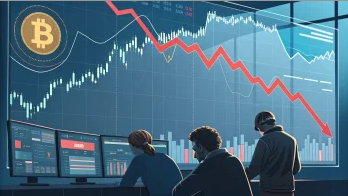In the financial world, the term “soft landing” is frequently used to depict a situation where the Federal Reserve (Fed) successfully increases interest rates without causing a recession. This narrative currently dominates the market, with stocks trading at record highs and the fear-greed index showing extreme greed. However, it’s essential to scrutinize the data and prepare your portfolio for the possibility that this narrative may not unfold as anticipated.
Table of Contents
ToggleUnderstanding the soft landing narrative
View this post on Instagram
A post shared by Taylor Sohns – CFP®, CIMA®, MBA – Finance (@lifegoalinvestments)
Historical context of soft landings
The soft landing narrative is not a recent development. It was also the dominant narrative before the start of the last two non-COVID recessions in 2000 and 2008. Despite the positive outlook, these periods were succeeded by severe recessions. This historical context serves as a reminder that while a soft landing is feasible, it is not guaranteed.
The role of the labor market
The soft landing narrative’s primary justification is the labor market’s robustness. Current data indicates that unemployment is at a low point. However, a detailed examination of the history of recessions reveals a pattern: unemployment is typically at cycle lows when a recession commences. This pattern has remained consistent for the last 11 recessions.
Signs of weakening in labor statistics
While low unemployment rates may imply a strong economy, other labor statistics suggest potential weakening. Employers often decrease their employees ‘ hours before resorting to layoffs during a recession. Current trends in hours worked indicate a worrying decline, which could be an early warning sign of an impending recession.
Employment as a lagging economic indicator
Employment is often viewed as a lagging economic indicator, meaning it tends to change after the economy as a whole has already started to follow a specific trend. The monthly average job growth for the four quarters leading into a recession is typically strong. It’s not until the recession actually begins that job losses occur, and when they do, they can be severe.
Market behavior and recession probability
Despite the potential warning signs, the market is currently behaving as if there is no possibility of a recession. Stocks are at record highs, and the fear-greed index displays extreme greed. However, history demonstrates that in the past ten recessions, stocks have averaged a 31.5% drawdown.
Building protection into your portfolio
This analysis is not meant to instill fear or predict an inevitable recession. Instead, it serves as a reminder to be intelligent and proactive in managing your investments. Incorporating some protection into your portfolio can help safeguard your assets in case the soft landing narrative doesn’t materialize as expected. This could involve diversifying your investments, holding a portion of your portfolio in safer assets, or seeking professional advice to help navigate potential market downturns.
Frequently Asked Questions
Q. What is the “soft landing” narrative?
In the financial world, the term “soft landing” is frequently used to depict a situation where the Federal Reserve (Fed) successfully increases interest rates without causing a recession. This narrative currently dominates the market, with stocks trading at record highs and the fear-greed index showing extreme greed.
Q. What is the historical context of soft landings?
The soft landing narrative is not a recent development. It was also the dominant narrative before the last two non-COVID recessions in 2000 and 2008. Despite the positive outlook, these periods were succeeded by severe recessions. This historical context serves as a reminder that while a soft landing is feasible, it is not guaranteed.
Q. What role does the labor market play in the soft landing narrative?
The soft landing narrative’s primary justification is the labor market’s robustness. Current data indicates that unemployment is at a low point. However, a detailed examination of the history of recessions reveals a pattern: unemployment is typically at cycle lows when a recession commences. This pattern has remained consistent for the last 11 recessions.
Q. Are there signs of weakening in labor statistics?
While low unemployment rates may imply a strong economy, other labor statistics suggest potential weakening. Employers often decrease their employees ‘ hours before resorting to layoffs during a recession. Current trends in hours worked indicate a worrying decline, which could be an early warning sign of an impending recession.
Q. How is employment viewed as an economic indicator?
Employment is often viewed as a lagging economic indicator, meaning it tends to change after the economy as a whole has already started to follow a specific trend. The monthly average job growth for the four quarters leading into a recession is typically strong. It’s not until the recession begins that job losses occur, and when they do, they can be severe.
Q. How is the market behaving in relation to the possibility of a recession?
Despite the potential warning signs, the market is behaving like a recession is impossible. Stocks are at record highs, and the fear-greed index displays extreme greed. However, history demonstrates that stocks have averaged a 31.5% drawdown in the past ten recessions.
Q. How can I protect my portfolio?
Incorporating protection into your portfolio can help safeguard your assets if the soft landing narrative doesn’t materialize as expected. This could involve diversifying your investments, holding a portion of your portfolio in safer assets, or seeking professional advice to help navigate potential market downturns.

















